Entry Reinvented: 7 Fascinating Functional Door Designs
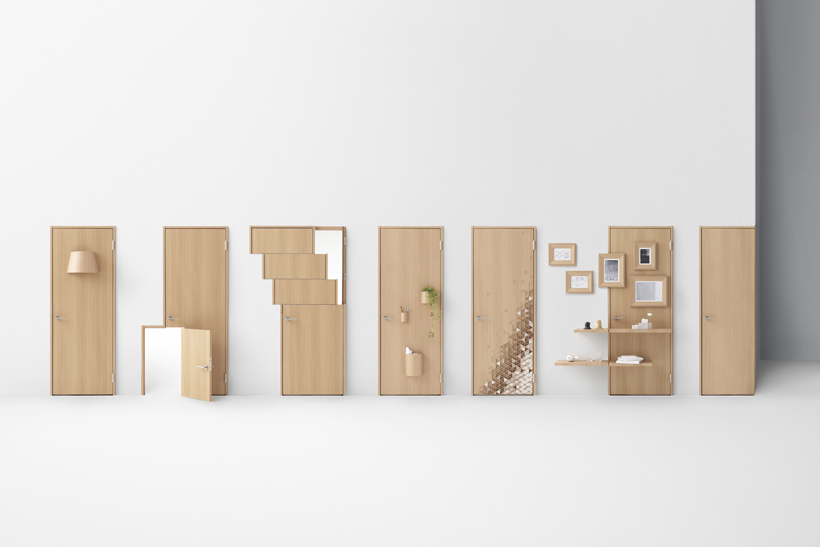
The humble door is essential to every home as its only divider from the outside world or the portal between two rooms. But when you think about it, all of them are basically the same. They may come in different sizes, shapes, materials, and colors, but most can hardly be described as fascinating. These seven innovative door designs from Japanese designers Nendo bring heaps of personality to the front door.

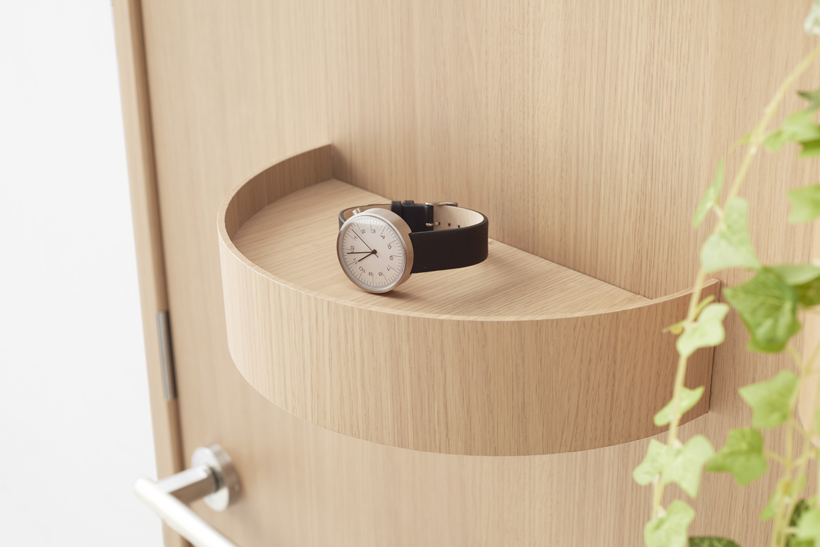
They are not only functional in the traditional sense; they all add value and new functions to the tired old door design. Above, Hang is fitted with an internal magnet sheet. This sheet allows users to easily hang accessories on the door such as planters, various containers, and even small garbage cans. This door design essentially gives you more floor and tabletop space by turning an otherwise-unused surface into a functional area.

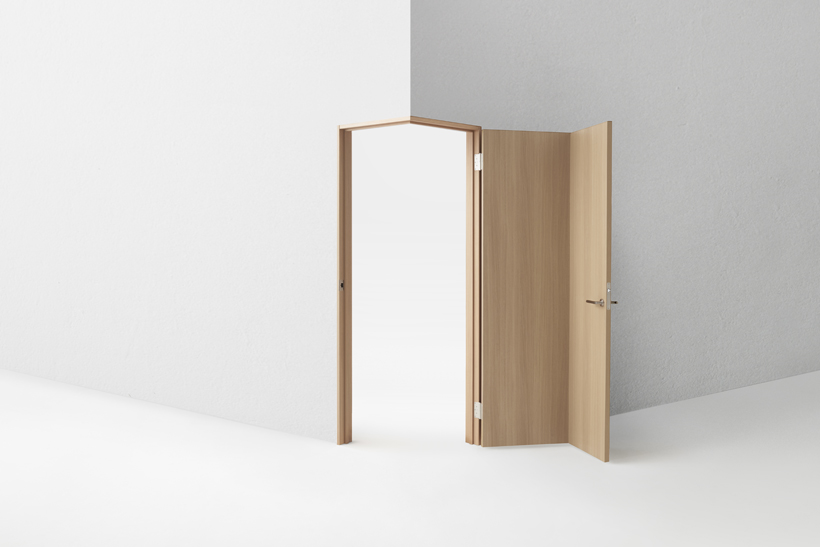
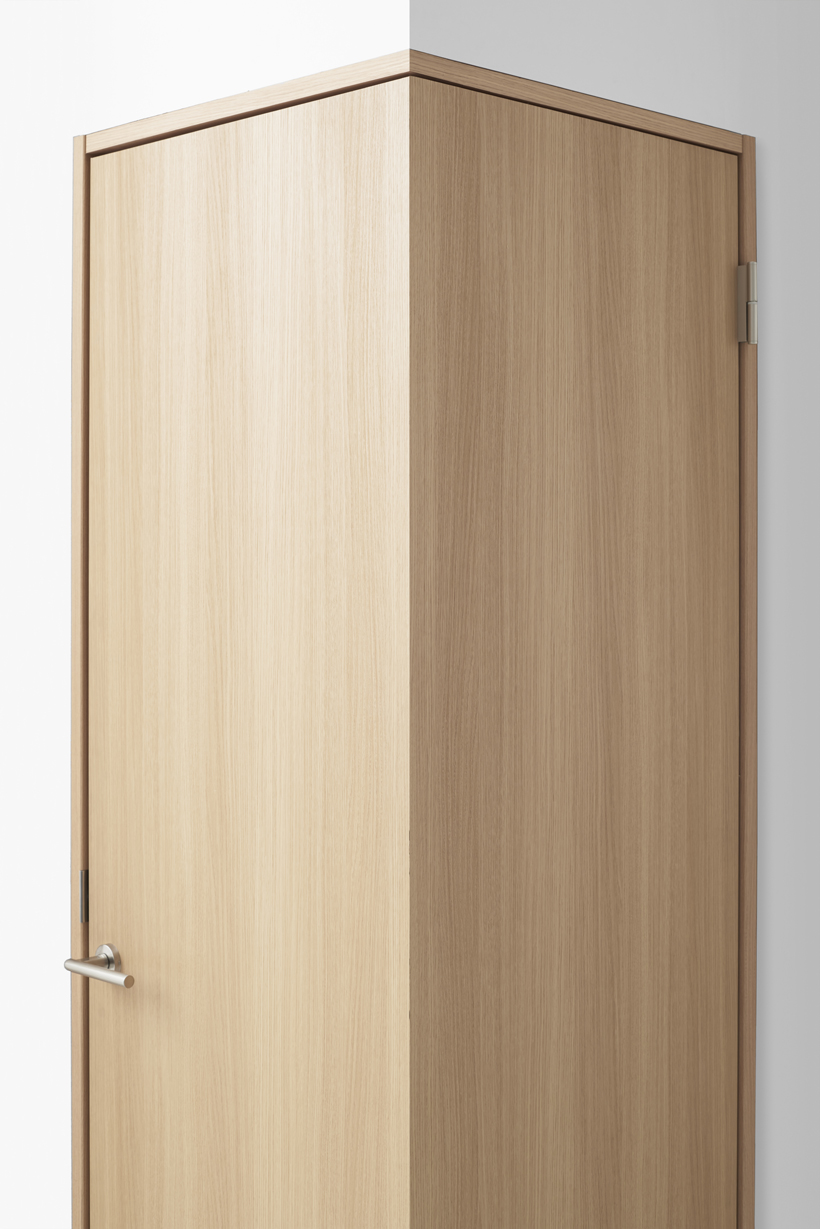
The design that really took our breath away is Corner. Instead of mounting on one of the flat surfaces of the home or internal room, Corner is located at – you guessed it – a corner. This eye-catching and inventive design makes you rethink the entire concept of how a door should look and function. As a bonus feature, Corner’s wider opening makes wheelchair access much easier than a traditional door.
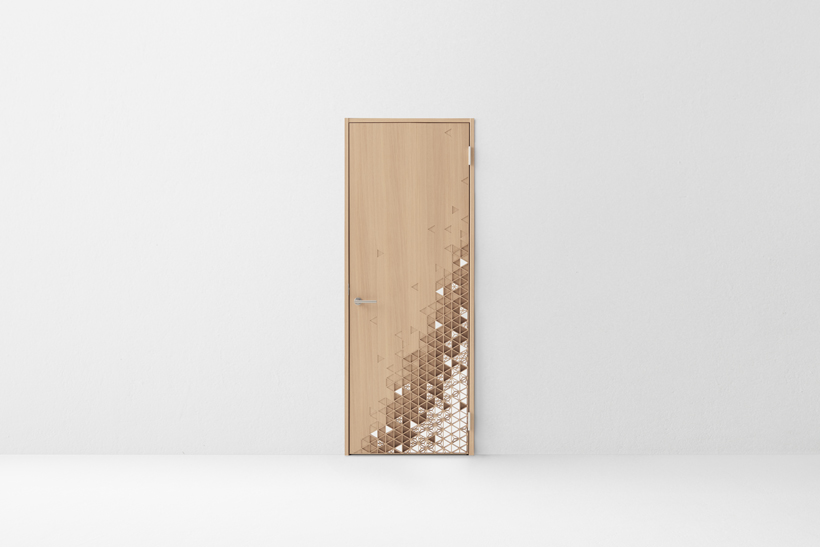
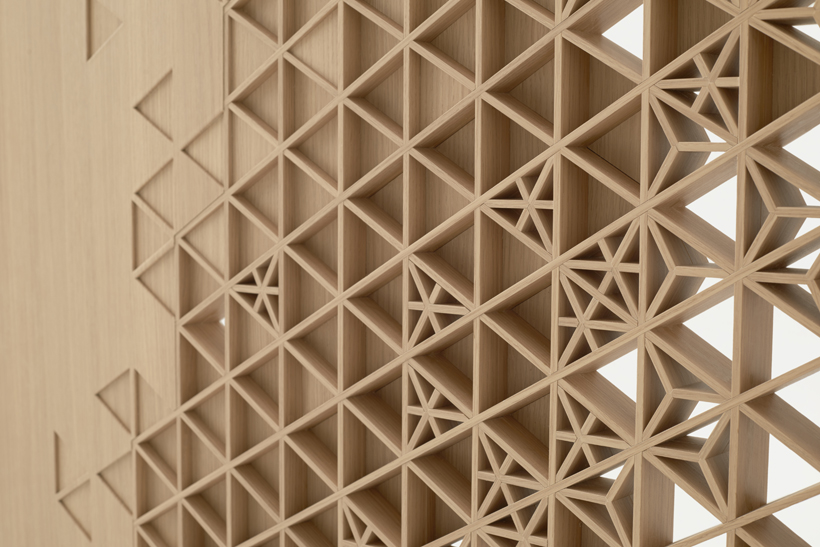
Kumiko is named for the traditional technique of assembling interior wooden lattices without the use of nails. The technique is used in Japanese tatami rooms and sports a light, airy feel. In this design, kumiko occupies a bottom corner and gradually blends into a smooth, solid door.

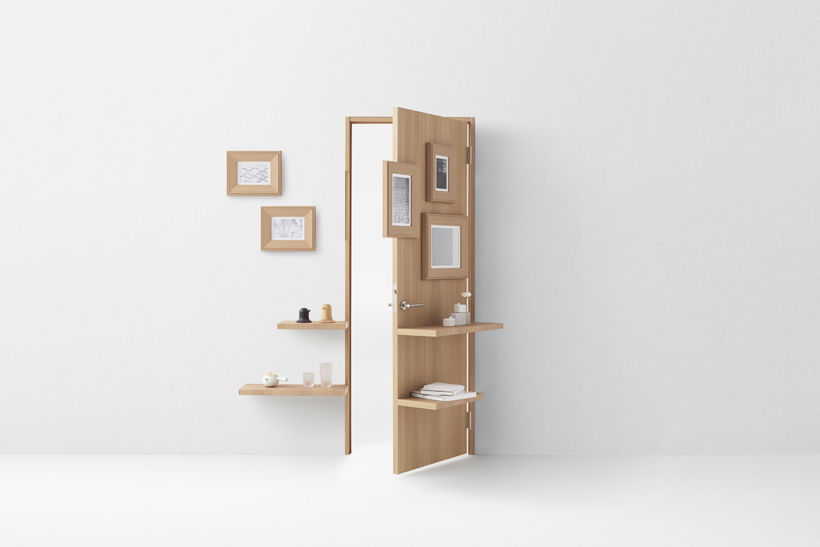
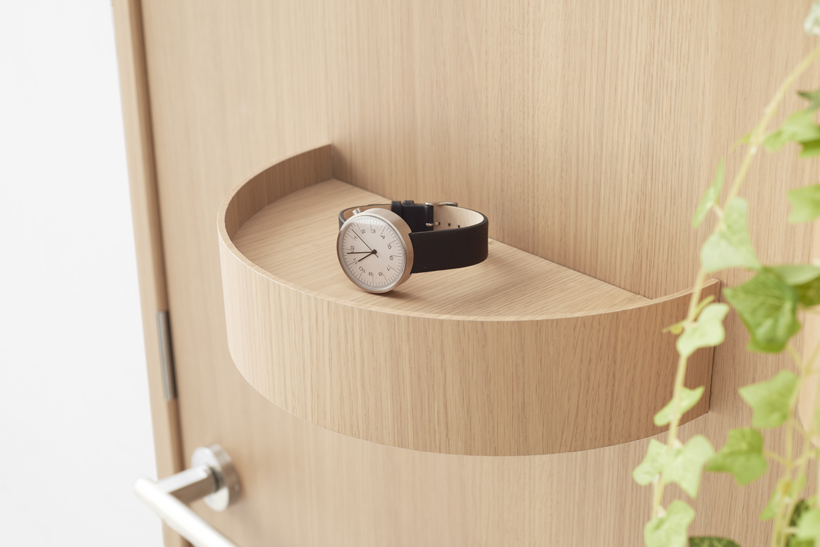
Wall blurs the line between portal and interior surface by integrating shelves and picture frames into its surface. The objects extend from the door to the wall just beside it, letting the door blend into the home’s interior seamlessly. All of the shelves and frames are attached securely using a technique that is usually utilized in finishing the edges of flush doors. A special connector attaches the removable frames to the surface in such a way that they will not shake when the door opens and closes.

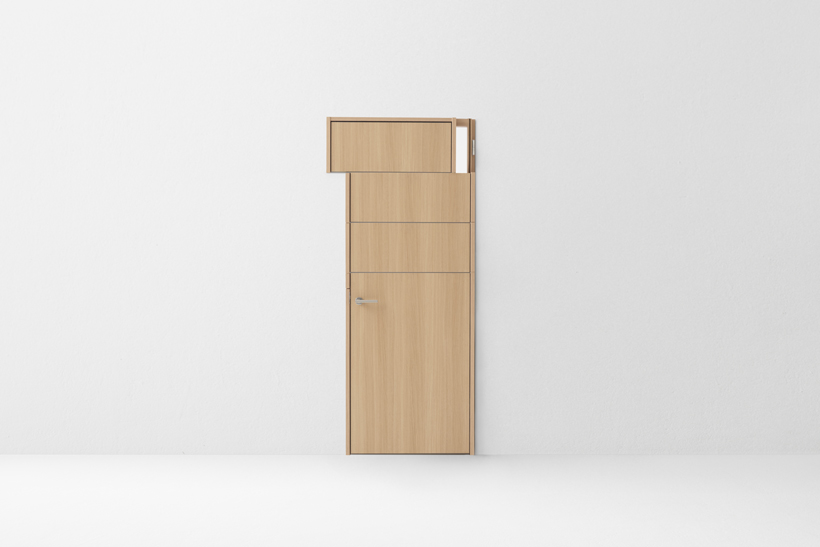
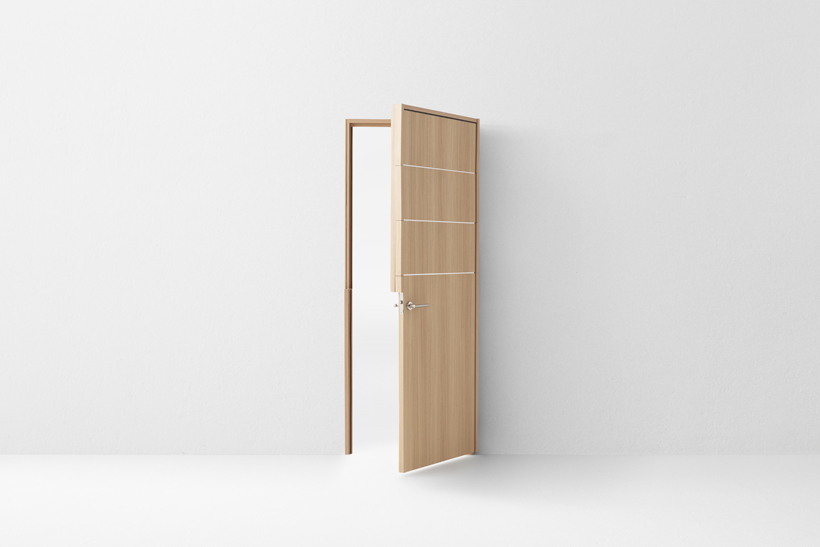
Slide utilizes sliding wooden panels on its top half to replicate the functionality of blinds. Small spaces can be opened up to invite a bit of sunshine in, or all of the panels can slide open to create an open feeling between rooms. The opening also increases air circulation and, if used at a home’s entry point, gives an inviting welcome to visitors. Slide’s panels are made using the same techniques used to make traditional sliding doors.

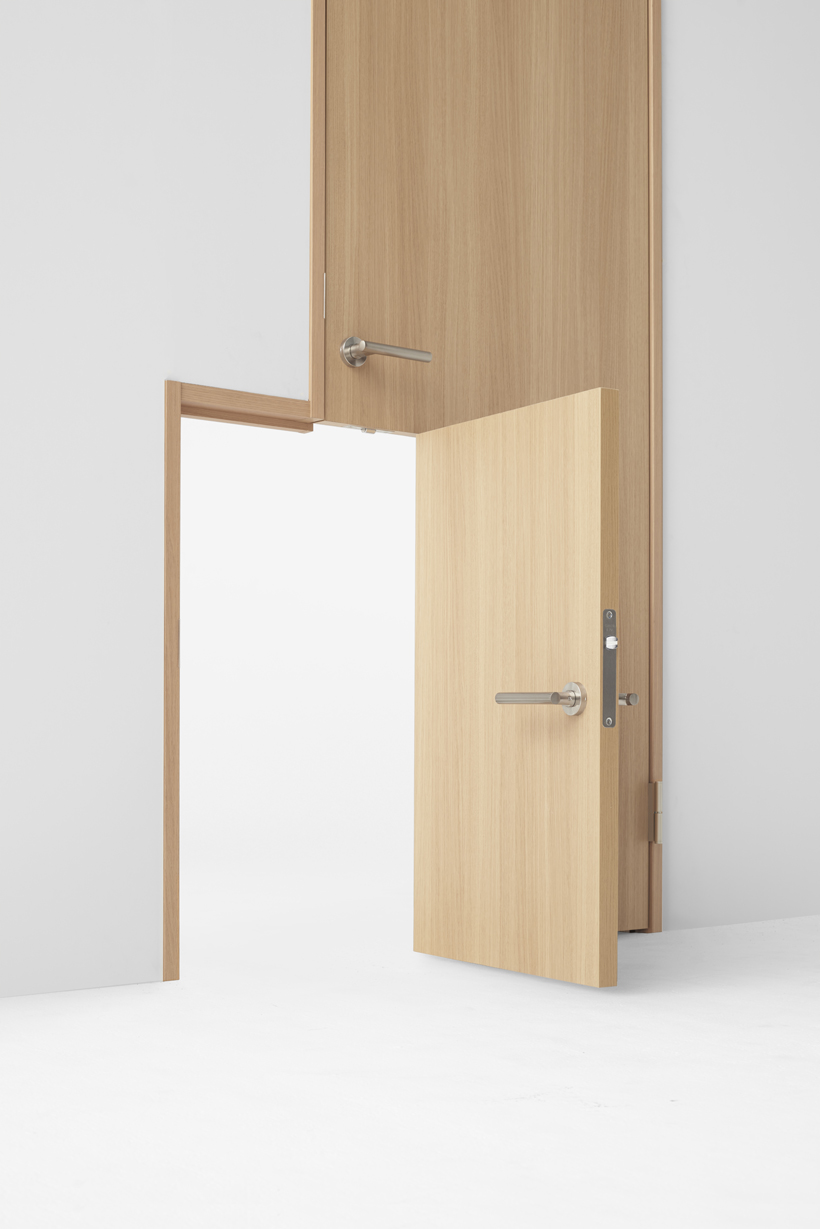
Baby creates portals of different sizes for adults and children. The larger door opens normally on its own, splicing the tiny door in half. The smaller bottom door opens independently as well, giving kids a fun kind of doggy door that is all their own.


Another beautifully functional design is Lamp, a door with a lighting fixture built right into it. The lamp uses the same type of wiring used in electronic locks, making it a seamless and fuss-free feature.
This series of doors was designed to celebrate the 70th anniversary of Abe Kogyo, a company that produces, amongst other items, wooden interior and front doors. Each design refreshes the very concept of the door and opens up a whole new world of possibilities for additional add-on products. The series is not meant as a simple display; rather, the doors are meant to be manufactured at some point, adding unexpected value to the very concept of the door.




